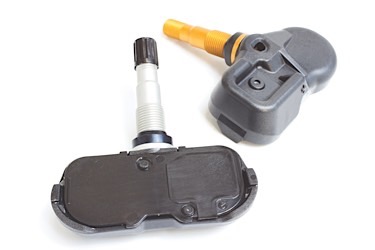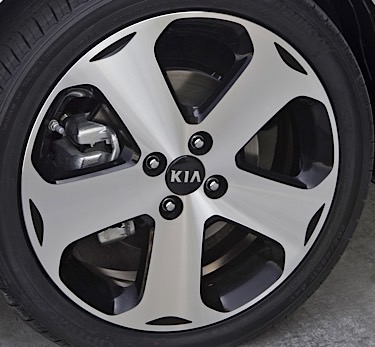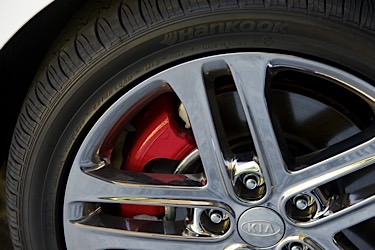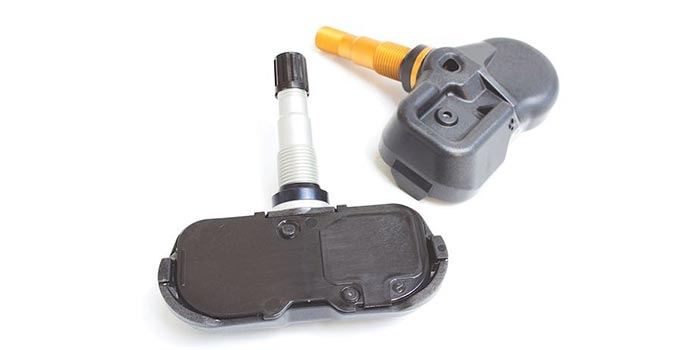 If you service tires, you should be stocking TPMS service kits as well as sensors. Avoiding the investment in parts and training could leave you with customers who are not satisfied. But, with aftermarket manufacturers of TPMS service items making them more economical for your shop to stock, you shouldn’t give it a second thought.
If you service tires, you should be stocking TPMS service kits as well as sensors. Avoiding the investment in parts and training could leave you with customers who are not satisfied. But, with aftermarket manufacturers of TPMS service items making them more economical for your shop to stock, you shouldn’t give it a second thought.
Even if your shop sells only a few tires a week, you should stock an assortment of service kits. Most tire product suppliers offer cabinets filled with the kits that will be in most demand. Not having the parts to service sensors might leave a car stuck in a bay that could be used for other repairs.
Why The Need For Service?
Every time a TPMS sensor is removed from a rim, it must be serviced — no ifs, ands or buts — and you must not reuse the seals or stems. This goes for sensors that range in age from six months old to six years old. The typical TPMS service kit includes a nut, valve core, grommets and valve cap. Each component has a specific function and lifespan that is not only determined by usage, but also by what happens when it is installed.
Most TPMS service kit items are one-time-use only. TPMS nuts are made from anodized aluminum to eliminate the contact of two dissimilar metals that would create galvanic corrosion and material deterioration. The nut has a bonded lubricant to help provide the proper torque required for seating a new grommet and to facilitate engineering advantages. If a nut is reused, the anodized surface may be scratched away and corrosion may occur between the sensor, wheel and stem.
On vehicles with metal valve stems, two grommets seal the sensor and nut to the wheel. Grommets conform to the mating surface of the rim. The instant the nut is torqued, it starts to take on the shape of the surfaces against which it is sealing. This memory cannot be erased. If the seal is reused, it could cause a slow leak.
Replacing the valve stem core on TPMS sensors prevents leaks. The elastomeric rubber and plastics degrade over time due to heat. The valve stem is subjected to heat from both the brakes and the tire’s contact with the road. A torque-calibrated driver should be used to tighten the valve core.

You may think that a valve core can’t go bad, but on TPMS stems, it happens. A TPMS valve core is nickel-plated and prevents galvanic corrosion and ensures the integrity of the primary seal. To prevent galvanic corrosion, never use a brass valve core with an aluminum TPMS sensor. Instead, always use a nickel-plated valve core with an aluminum TPMS sensor. If the wrong valve core is used, accelerated galvanic corrosion could result in the core becoming “frozen” and seized, stuck in the stem and unable to be removed. TPMS valve cores also have special Teflon coating that helps seat and seal the stem.
Stocking Replacement Sensors
We are approaching the eighth year of mandatory TPMS on all vehicles. TPMS sensors typically have a battery life of seven to 10 years. This means that many sensors are due for replacement in the very near future.
Current replacement solutions fall into one of three categories. First is the direct replacement strategy that replaces a “like for like” sensor. Second is a programmable sensor that comes blank and can be programmed to match a damaged sensor or current ID. Third is a pre-programmed sensor that mimics many protocols.
Direct replacement sensors can return the system to like-new operation, but are difficult for a shop to stock due to a large number of part numbers. Programmable and pre-programmed sensors reduce inventory and stocking requirements, decreasing the wait time for parts.

Other Consumables and Tools
Tools are critical for TPMS service, including those used to torque nuts and valve cores; both are essential to keep sensors leak-free. From an equipment perspective, some tire machines are better at controlling a tire during mounting and dismounting so the sensor is not damaged.
Training is key with TPMS and should be renewed every year, as new systems and sensor placements come out annually. New replacement sensors will also require some training.
By law, you can’t disable a TPMS system because the customer doesn’t want to pay, or if you do not have the skills or parts to work on the system. In the eyes of NHTSA, neglecting the sensors is like removing an airbag to install a video screen or removing a catalytic converter to achieve more performance. By ensuring TPMS system integrity, you will be doing both your shop and your customers a favor.














